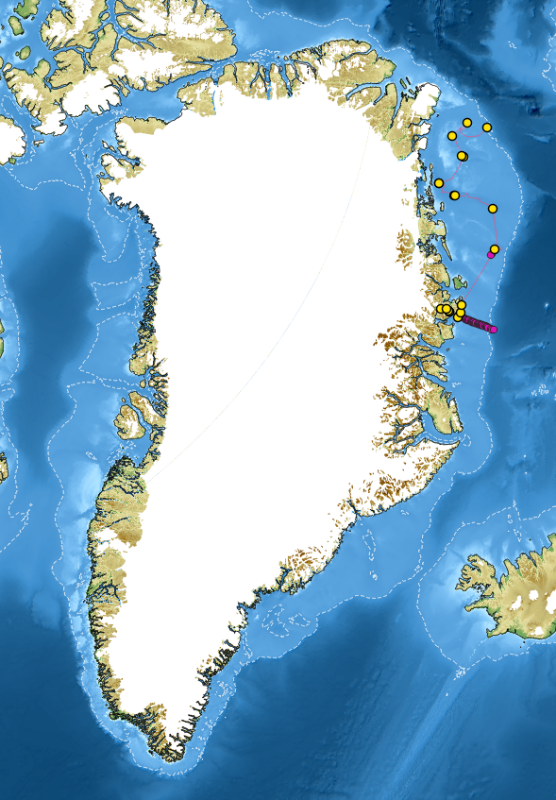New project from the Independent Research Fund Denmark.
Prof. Marit-Solveig Seidenkrantz has together with Drs. Christof Pearce and Katrine Juul Andresen from the Department of Geoscience, and Prof. Søren Rysgaard from the Arctic Research Centre, Department of Biology, received a research grant of DKK 6,183,661 from the Independent Research Fund Denmark to carry out the project: “The NE Greenland shelf – a blank spot on the map (GreenShelf)”.

The NE Greenland shelf is still close to being a blank spot on the world map with respect to its geology and its present and past climate and oceanography and this project aims at mitigating this lack of knowledge.
This became possible because in 2017, one of the largest interdisciplinary marine expeditions to the region (Fig. 1) was carried out due to funding by Danish Centre for Marine Research (DCH). The expedition took place with the Danish research vessel “Dana” with the participation of 20 scientists and students as well as 18 crew and was led by M-S Seidenkrantz. It brought back ~2200 km of shallow seismic profiles, >100 m of sediment cores and hydrographical data and water samples from 29 stations across the shelf. This unique dataset was collected in an effort to establish a new cutting-edge research endeavour elucidating the region’s oceanographic, climatic and geological development since the Last Glacial Maximum (LGM). It now allows us to carry out a comprehensive study of the NE Greenland shelf region and notably advance our knowledge on this little known region of the world, understanding its role in the global climate system. It will also provide new information, essential for improving models of future climate, helping society’s endeavour to mitigate climate change. Specific aims of the project are:
- To characterize the present hydrographical conditions and identify the various water masses in the study area in order to improve our overall understanding of the oceanography of the Arctic Ocean and Nordic Seas. An important element is here to investigate the sources of Atlantic Water reaching the NE Greenland shelf and coast and its interaction with Polar Water.
- To identify and explain variability in ocean circulation, sea ice cover and freshwater influx since the LGM based on multi-proxy investigations of our extensive set of marine sediment cores. We will also identify changes in dominant source of Atlantic Water influx through time.
- To investigate the link between sea floor topography, sub-seafloor structures and oceanography, by documenting morphological and lithological records of glacial and sedimentary processes.
- To develop the post-LGM geological/glacial history of the NE Greenland shelf allowing us to evaluate the impact of past changes in ocean circulation on glacier melting rates.
- To synthesise the geological, oceanographic and climate development of the study area and link this information to conditions in the larger Greenland and North Atlantic region in order to elucidate the implications for the large-scale Atlantic Ocean circulation and global climate.
The project will be carried out with both national and international collaboration, including participation by researchers from the Geological Survey of Denmark and Greenland. One postdoc and one PhD student will be directly hired by the project, while other early-stage researchers and students will carry out their studies linked to the project.
